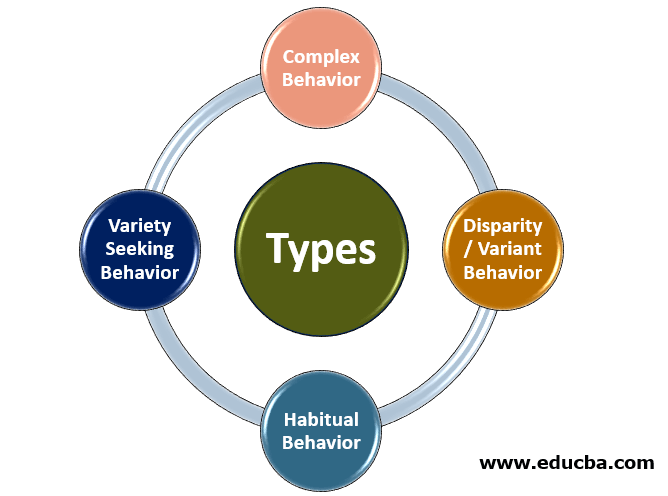Updated March 8, 2023

Introduction to Behavioral Marketing Segmentation
Market segmentation is the process of segregating the consumers/market depending on different types of factors like age, location, region, gender, attitude towards purchasing the product, social status, trade or profession and many more. Segmenting the market helps the marketers to organize the marketing campaign in a more efficient and cost-effective manner. Segmentation business is a pedestal for the market research and success of any business. Segmenting a market helps to customize and personalize a marketing campaign more precisely as per the needs of the customers and purchase patterns.
Behavioral market segmentation refers to the process of segmenting a market on the basis of behavioral characteristics of consumers/market like the frequency of using a particular product, the loyalty of the customers towards a particular brand, benefits needed, during any occasion and behavior or attitude of consumers towards purchasing/buying a product/service. By catering to the needs of consumers based on the behavioral pattern helps to build the market loyalty of the brand. Behavioral segmentation is the market study based on the behavioral traits or the attitude of consumers or markets — likes or dislikes of the consumer relevant to particular product(s)/service(s), interest in a brand, purchase pattern, cost sensitivity.
Objective
It is important to understand that behavioral characteristics or traits may sometimes correlate with demographic factors like age, gender, etc. The behavior may or may not depend on certain demographic factors. The main objective of behavioral market segmentation is to narrow the consumer market and fulfill the consumers’ needs and aspirations. Consequently, it helps to personalize the marketing campaign efficiently, thus saving time and marketing effort of the resources engaged in the marketing event. Behavioral segmentation helps to fragment the consumer market into smaller segments based on the behavioral variables/traits helping the marketing team or the brands utilise their resources effectively, saving the unnecessary wastage of time.
Types of Behavioral Market Segmentation
The behavior of the consumers can be divided into the below categories:
1. Complex Behavior
This type of behavior segmentation refers to the class of consumers which demonstrate highly complicated decision-making towards purchasing a certain product(s)/service(s). Consumers might exhibit complex buying behavior.
2. Variety Seeking Behavior
The consumers’ variety-seeking behavior is related to the type of consumers who try different types of brands and do not stick to one particular product. It’s important to identify these consumers for promoting certain brands.
3. Disparity / Variant Behavior
This behavior refers to the decision-making process of the consumers, which is based on the fact that the consumer may prefer a different brand for the same type of product based on the cost of the product. They may choose less price over the quality of the product and may opt for the lesser price option.
4. Habitual Behavior
The habitual behavior of the consumer is the type of consumer segmentation in which the consumers stick or are habitual to choose or purchase a particular brand without any second thought in mind. These types of consumers choose to stick with their particular brand and would never choose any other brand over the one.
Examples of Behavioral Segmentation
Let’s try to understand behavioral market segmentation through a few examples.
- There are certain brands that sell products on particular occasions, or to be more precise, they sell products during particular festivals. For example, organic colors are promoted and sold during a particular festival rather than throughout the year.
- Brands like Archie’s or other hallmark cards/gift shops promote or target their audience/consumers during valentine’s day or a whole week of February when different days are celebrated, and maximum products are sold.
- E-commerce brands and companies come up with lucrative sales and discount offers during festivals as consumers exhibit the behavior of purchasing more during the festive seasons like Diwali, Dussehra, etc.
Advantages of using Behavioral Market Segmentation
Market segmentation based on the behavioral pattern has got advantages, including:
1. Personalization
This refers to understanding the needs and wants of customers in a personalized manner and helps the marketers to attract customers with lucrative discount offers at appropriate occasions through appropriate channels of marketing.
2. Predictive Analysis of the Market/Consumers
Behavioral market segmentation guides the marketing team to study and predict the pattern of purchase for a particular consumer market. It helps to save a lot of resources and helps to address future consumer behavior.
3. Prioritizing Consumers
By studying the behavioral characteristics of the consumers, it becomes easy for marketers to prioritize the high-value customers for generating the maximum revenue and to address the needs of these high-value consumers by allocating and engaging quality time and resources to serve their demands.
4. Performance Monitoring
Behavioral segmentation helps to accumulate and study the growth factor of the marketing brands on a monthly/quarterly, or annual basis. It helps to keep track of the performance of the product growth and monitor the audience’s interest in purchasing the product/service.
5. Consumer/ Loyalty Retention
Market segmentation based on the behavioral pattern helps to study and retain loyal customers, and it will allow to cater to the needs of the consumers in an efficient manner and also helps to recognize and reward loyal customers timely.
Conclusion
Summing up all the facts about behavioral segmentation, one can easily say that it helps to club/group/target the consumers with similar buying/purchasing patterns and makes it easy for the marketers to approach the consumers in a personalized and organized manner. It guides and assists the marketing team to predict and plan future marketing strategies based on the data collected by the behavioral pattern of the consumers. Thus behavioral market segmentation streamlines the marketing process, gaining the loyalty of the consumers, retaining the consumers for a long period of time, and helps to make the brand stand out among the competitors in the market. Everything has its own pros and cons; thus, it is important for marketers to maintain the balance between the different groups of consumers to achieve maximum benefit from the behavioral segmentation of the market.
Recommended Articles
This is a guide to Behavioral Marketing Segmentation. Here we have discussed the Objectives and Types of Behavioral Marketing Segmentation along with the Examples and Advantages. You can also go through our other suggested articles to learn more –

